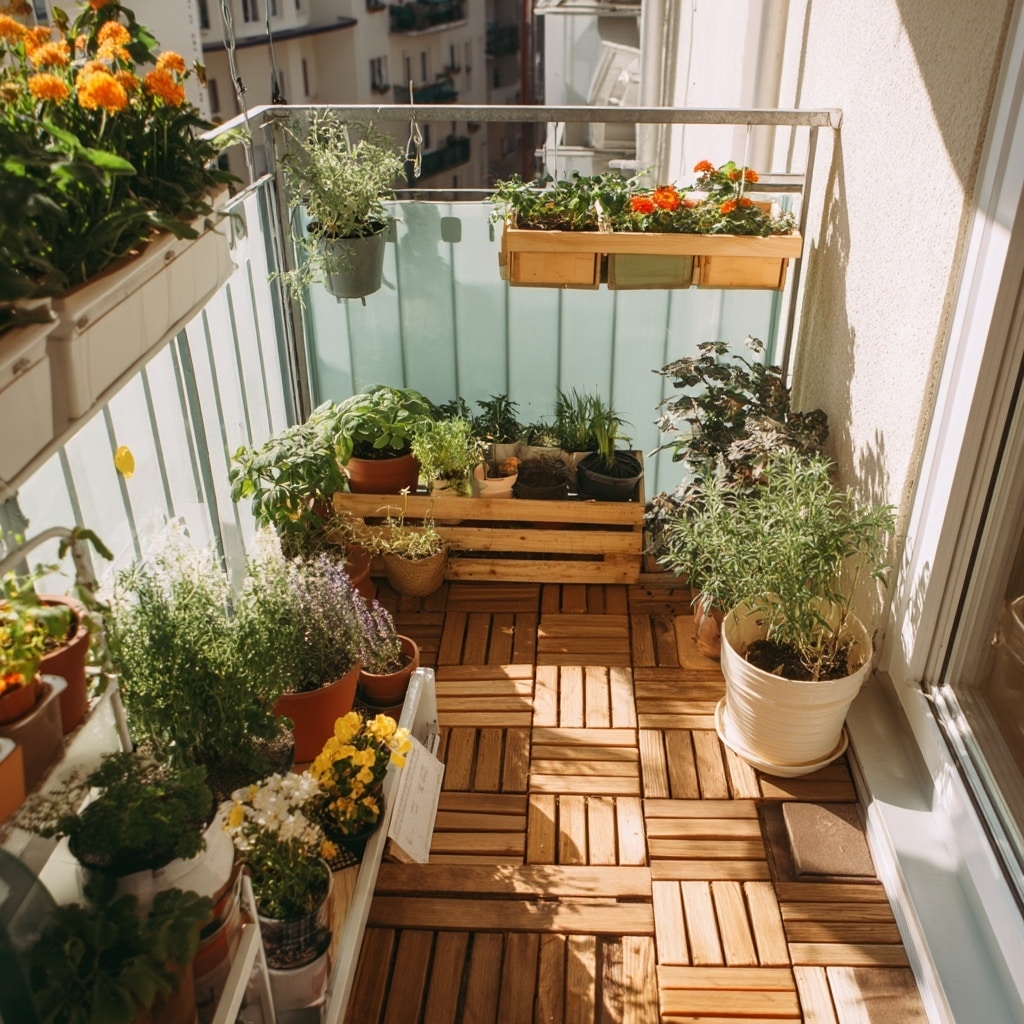Container gardening is one of the easiest ways to grow lush flowers, tasty vegetables, and vibrant greenery—no yard required. Whether you’re working with a balcony, patio, or just a sunny doorstep, containers give you the flexibility to garden anywhere. This method isn’t just about saving space—it’s about adding life to it. From renters to busy families, container gardening for small spaces allows anyone to grow a beautiful, thriving garden right at home.
Table of Contents
Why Container Gardening Works for Any Space
Container gardening is a smart solution for anyone who doesn’t have access to traditional garden beds. Whether you live in an apartment, have a shaded backyard, or just want to add a pop of green to your deck, container gardening makes it possible.
One of the biggest advantages is its flexibility. You’re not tied to one spot—move containers to catch the sun, protect delicate plants from wind, or just refresh your layout for the season. It’s ideal for people with mobility issues too, as containers can be raised or placed at waist height to reduce bending or kneeling.
Plus, if you’re renting your home or living in a place with strict landscaping rules, container gardening lets you personalize your space without breaking any ground—literally.
This growing method is also great for beginners. You can start small with a single pot of herbs or lettuce, then gradually expand as you gain confidence and experience. And because you control the soil, drainage, and placement, you’re more likely to succeed, even in challenging growing conditions.
Choosing the Right Container
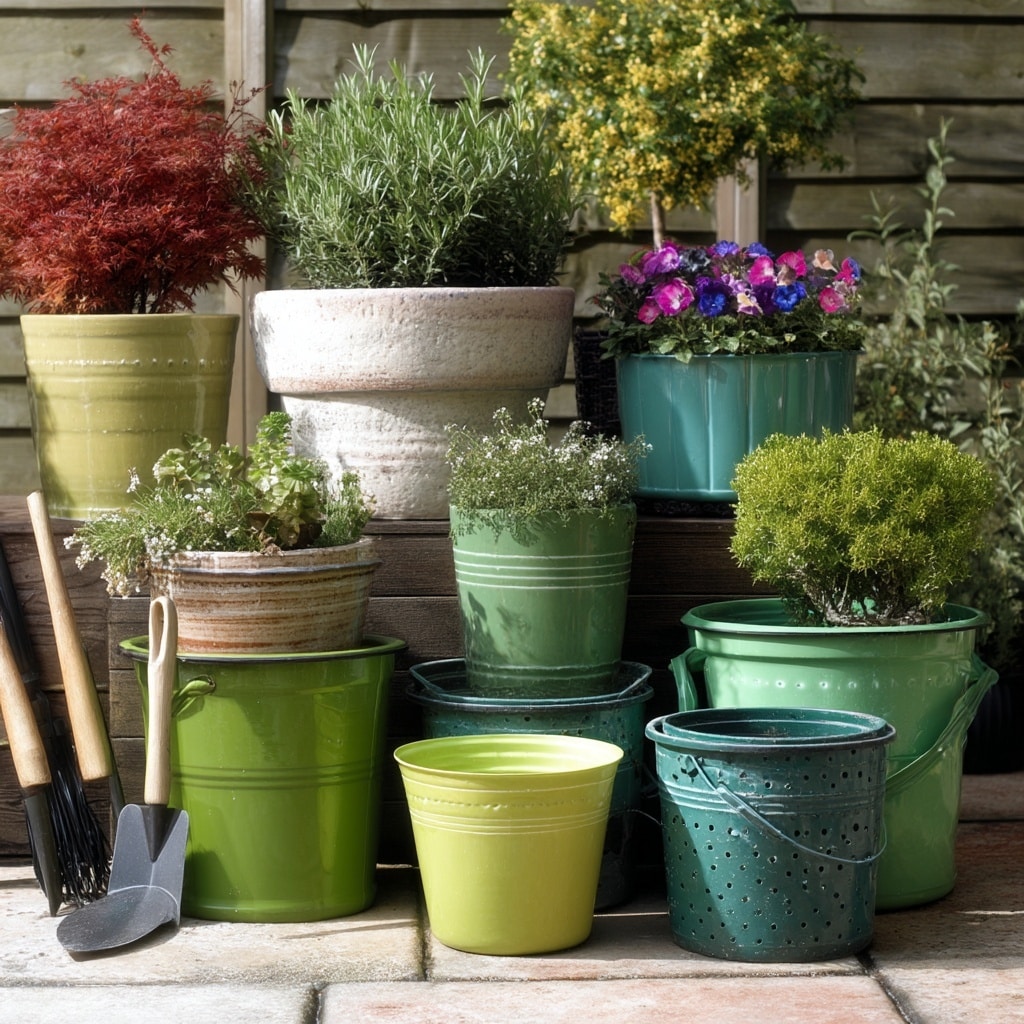
Picking the right container is more than just a style choice. It affects your plant’s health, how often you’ll need to water, and even how successful your container gardening efforts will be.
Size Matters
When it comes to containers, bigger is usually better. Small pots may look cute, but they dry out quickly and can restrict root growth. A larger container gives your plants room to thrive and helps regulate moisture more evenly. This is especially important for outdoor setups where summer heat can dry soil fast.
If you’re new to container gardening, a good starting point is a five-gallon bucket with holes drilled in the bottom. It’s budget-friendly, spacious, and works for a variety of plants—from tomatoes to herbs.
Also, remember that pots often look smaller outdoors than they do inside. What seems large in your living room might get lost on a patio. When in doubt, go up a size.
Drainage Essentials
Proper drainage is non-negotiable. Containers must have at least two to four holes to allow excess water to escape. Without it, water collects at the bottom, suffocating roots and leading to rot.
Avoid the common myth of putting rocks at the bottom of your container. Instead of improving drainage, this actually creates a waterlogged zone that brings moisture closer to the roots—doing more harm than good.
If you’re using decorative pots without holes, place a plastic nursery pot inside and remove it for watering. Or, drill your own drainage holes using a simple hand drill.
Picking the Best Soil (and What to Avoid)

The success of your container gardening project starts with what’s inside the pot—soil quality makes all the difference. Many beginners are tempted to use topsoil or garden dirt, but that’s a mistake in containers.
Always use potting soil, also called container mix. It’s designed to drain well, retain just enough moisture, and support healthy root growth. Garden soil, on the other hand, becomes compact and poorly drained when used in containers, making it harder for roots to breathe and grow.
It’s also worth investing in quality potting mix. While it might cost more than a $2 bag of topsoil, the payoff is healthier, more productive plants. Look for mixes with added organic matter and ingredients like perlite or vermiculite for improved drainage and aeration.
Avoid DIY shortcuts like putting rocks or broken clay at the bottom of the pot. Contrary to popular belief, this doesn’t help with drainage—it actually keeps water closer to your plant’s roots, which can lead to rot.
Over time, even good potting soil breaks down. Plan to replace or refresh your soil every five to six years to keep it performing well.
Fertilizing Your Container Garden
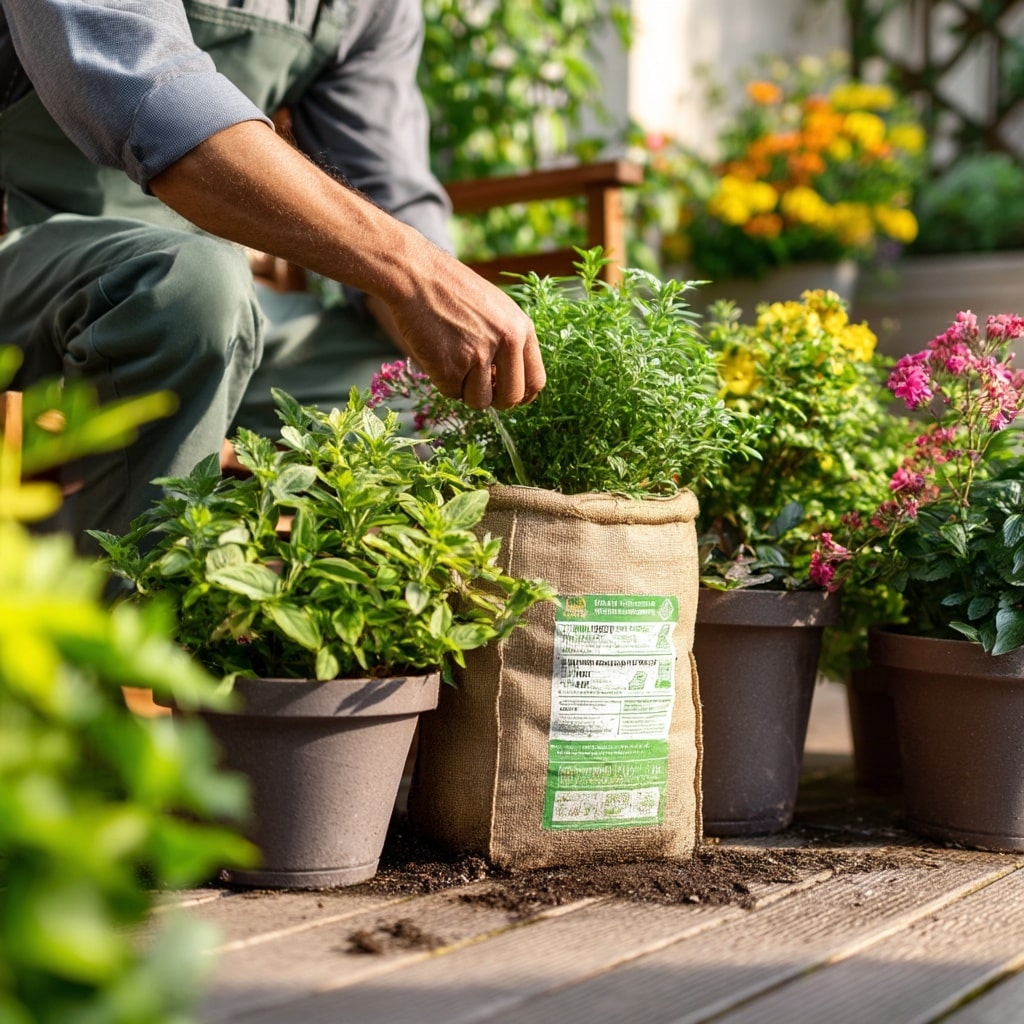
In traditional garden beds, plants can stretch their roots to find nutrients. But in containers, their world is limited—and that means your plants will eventually need a nutrient boost.
Most high-quality potting soils contain slow-release fertilizer, which helps your plants get off to a strong start. But by mid-season, especially in fast-growing vegetables and flowering annuals, those nutrients are often used up.
To keep your container gardening efforts thriving, apply a balanced fertilizer with equal parts nitrogen (N), phosphorus (P), and potassium (K)—something like a 10-10-10 or 12-12-12. These numbers are listed right on the bag.
You can choose between:
- Water-soluble fertilizers for weekly or biweekly feeding
- Granular slow-release options that last longer with less effort
Avoid over-fertilizing, which can burn roots and harm the plant. Always follow the instructions on the package, and water well after applying.
If you’re growing edible plants, make sure the fertilizer is labeled safe for vegetables. And for flowering plants, you might switch to a formula with slightly higher phosphorus to boost blooming later in the season.
With container gardening, regular feeding keeps your plants lush, green, and productive—especially in the heat of summer when their nutrient needs increase.
Watering Wisely in All Seasons
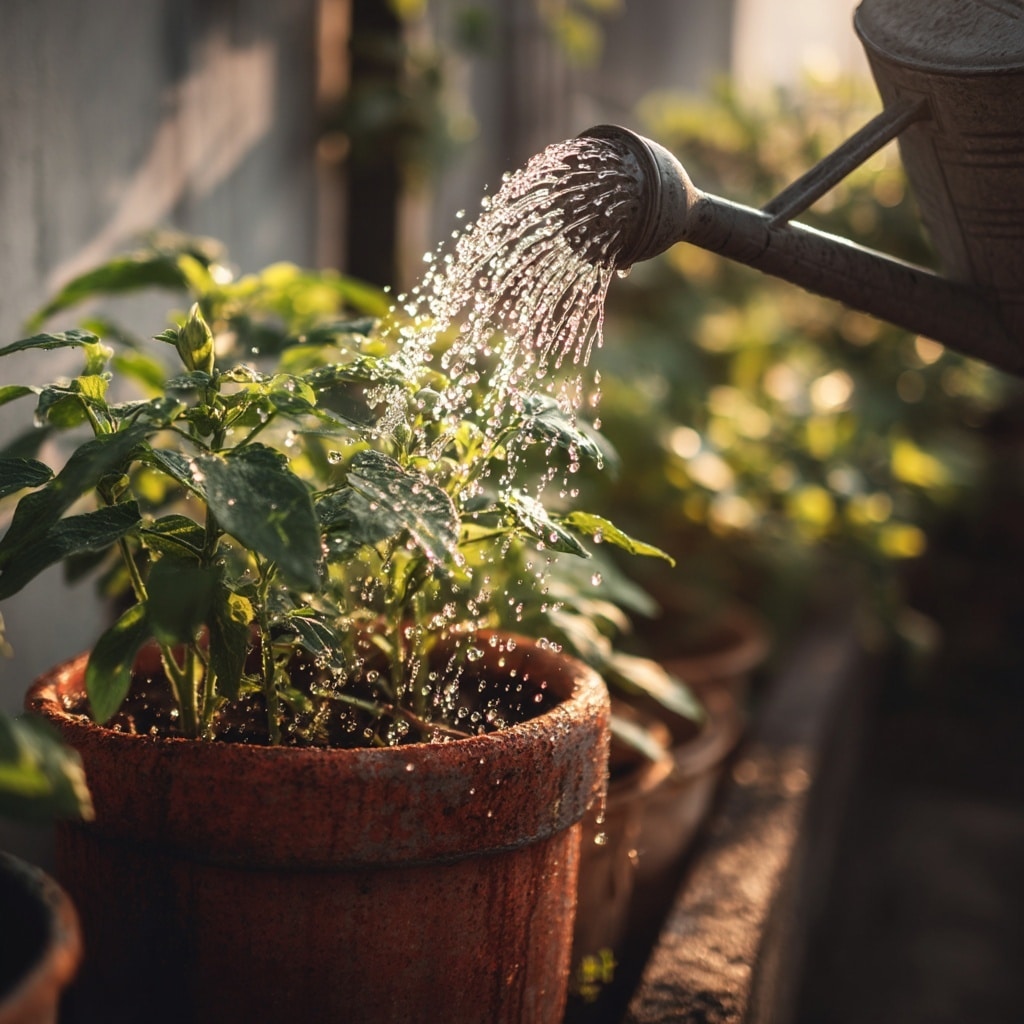
Watering is one of the most important—and often most overlooked—aspects of successful container gardening. Unlike garden beds, containers dry out much faster, especially in warm or windy conditions.
Early in the growing season, you might only need to water once or twice a week. But as your plants grow and their roots fill the container, they begin to use up water more quickly. By mid to late summer, especially during heatwaves, you may need to water every single day—sometimes even twice a day for smaller pots or those in full sun.
Here’s how to water smarter, not harder:
- Check soil moisture daily by sticking your finger into the top inch of soil. If it feels dry, it’s time to water.
- Water deeply until you see it draining out the bottom holes. This ensures the entire root zone is hydrated.
- Water early in the day so your plants can absorb moisture before the heat sets in.
If your plants start wilting despite regular watering, consider the container size or sun exposure. Smaller pots dry out quicker, and some spots may be too hot or too breezy.
The beauty of container gardening is mobility—if a plant isn’t happy in one location, simply move the pot to a shadier or more sheltered area.
What to Grow in Containers
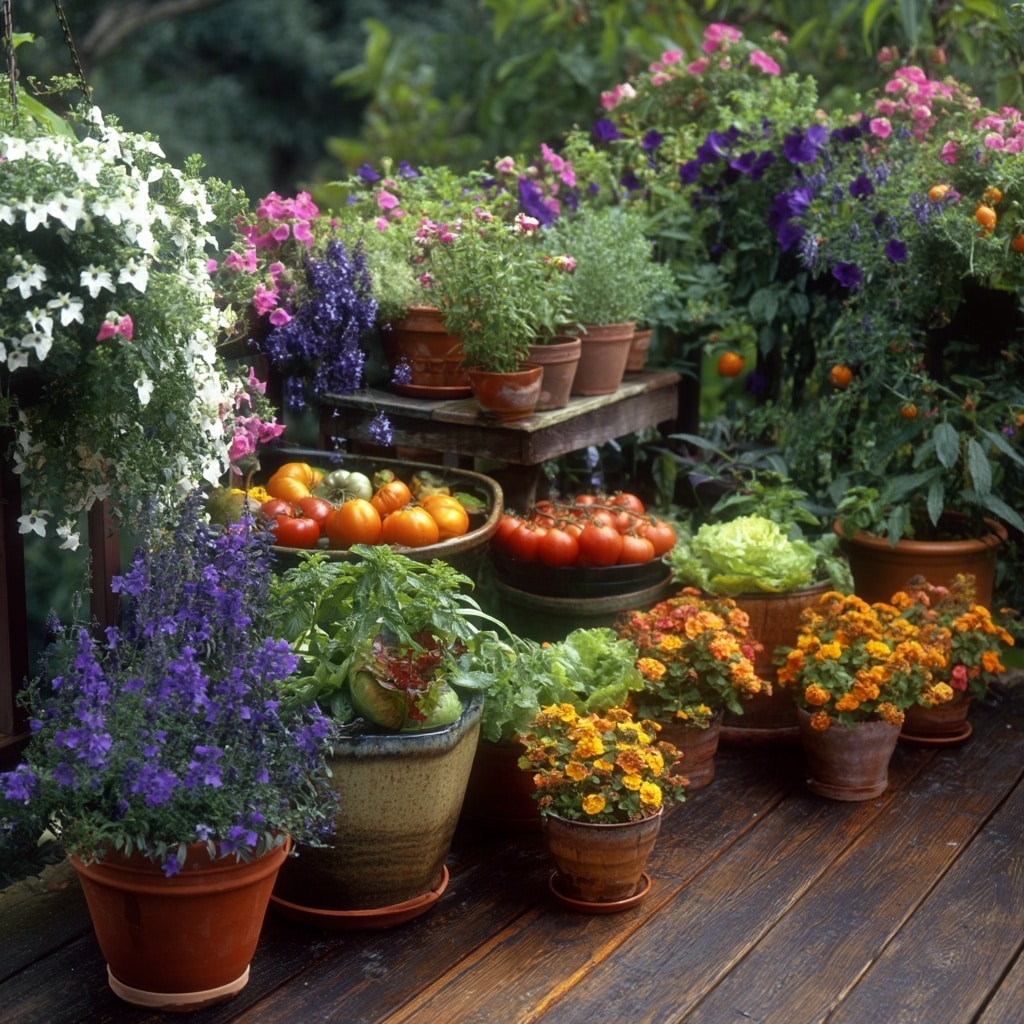
One of the most exciting parts of container gardening is choosing what to grow. With the right varieties and placement, your containers can be just as productive and colorful as a full garden bed.
Best Ornamental Plants
If you’re going for beauty and color, ornamental annuals are a top choice. Many are bred specifically for containers and offer compact growth, long blooming seasons, and vibrant foliage.
Here are a few great options:
- Geraniums – Classic container plant with bright blooms and thick leaves
- Petunias – Trailing or upright varieties for full sun spots
- Begonias – Ideal for partial shade with eye-catching flowers
- Sweet alyssum – Fragrant, low-growing filler plant
- Ageratum – Soft, fuzzy flowers that add texture and color
These plants thrive in containers and perform well with regular watering and feeding. You can also combine different heights and colors in the same pot for a dramatic effect—just make sure they share the same sun and water needs.
Easy Edible Options
Vegetables and herbs are also excellent choices for containers—especially if you’re limited on space but still want to grow your own food.
Start with compact, fast-growing crops like:
- Lettuce and leafy greens – Grow quickly and tolerate cooler temps
- Radishes – Great for small pots and short growing cycles
- Herbs – Basil, thyme, mint, parsley, and chives all do well in containers
- Bush beans or compact cucumbers – Look for dwarf or patio varieties
- Tomatoes – Choose determinant or “bush” types bred for containers
Place edibles in full sun, with at least 6 hours of direct light daily, and be ready to water and fertilize regularly. Choose sturdy pots and support plants like tomatoes with cages or stakes.
Even in a small space, container gardening allows you to enjoy fresh food just steps from your kitchen.
Conclusion
Container gardening opens the door to a world of possibilities—no matter how small your space may be. With the right containers, quality soil, consistent care, and a thoughtful selection of plants, you can create a vibrant, productive garden right on your porch, patio, or balcony.
It’s flexible, beginner-friendly, and rewarding. Whether you’re growing herbs for your kitchen, flowers for your entryway, or veggies for your dinner plate, container gardening puts you in control of your green space.
If you’re ready to give your space a green makeover, start with one pot—then let your garden grow from there.


